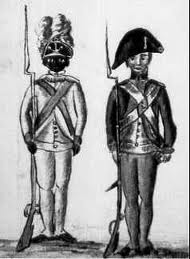Annotation:Lord Dunmore's Quick Step: Difference between revisions
No edit summary |
No edit summary |
||
| Line 1: | Line 1: | ||
'''Back to [[{{BASEPAGENAME}}]]''' | =='''Back to [[{{BASEPAGENAME}}]]'''== | ||
---- | ---- | ||
<p><font face="garamond, serif" size="4"> | <p><font face="garamond, serif" size="4"> | ||
| Line 24: | Line 24: | ||
<br> | <br> | ||
---- | ---- | ||
'''Back to [[{{BASEPAGENAME}}]]''' | =='''Back to [[{{BASEPAGENAME}}]]'''== | ||
Revision as of 02:26, 14 October 2014
Back to Lord Dunmore's Quick Step
LORD DUNMORE'S QUICK STEP. English, March (6/8 time). D Major. Standard tuning (fiddle). AABBCCDD.

John Murray [1] (1732-1809), 4th Earl of Dunmore, was the last Royal Governor of Virginia, serving from 1771 to 1776 when he departed as a consequence of the American Revolution. However, he still held his position until peace was signed in 1783, and continued to draw his pay. Although a contentious figure with the colonists as governor, he prosecuted Lord Dunmore's War, a series of campaigns against the Indians (principally the Shawnee) of western Virginia and the Ohio valley. During the Revolution Dunmore issued a proclamation of emancipation for black slaves who would desert their Patriot masters and join the British cause, and eventually he formed an Ethiopian Regiment. Unfortunately, most of the black soldiers died of smallpox on board ship, not having been inoculated against the disease. Later Dunmore became Governor of the Bahamas (1787-1796).

Source for notated version:
Printed sources: Aird (Selection of Scotch, English, Irish and Foreign Airs, vol. 5), 1797; p. 31. Johnson (A Further Collection of Dances, Marches, Minuetts and Duetts of the Latter 18th Century), 1998; p. 8.
Recorded sources:
